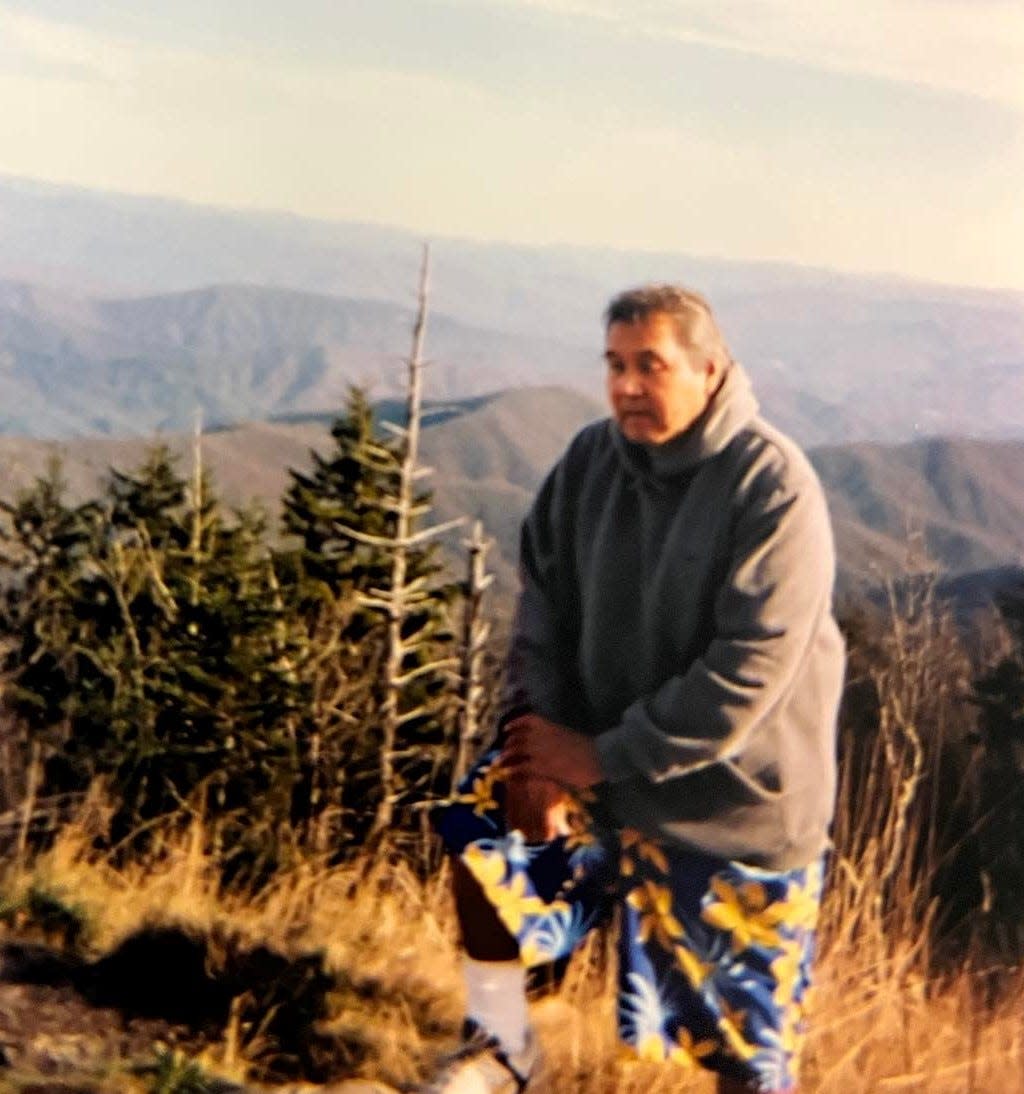Nature Journal: Squirrell's legacy as a superior stonemason and artisan lives on

John Adam Squirrell, a master mason who gathered “native stone” in high elevation Ice Age “quarries” died recently at the age of 85. He was a fine man I was always proud to have as a friend.
Even if you do not know much about stonework, you can easily learn to spot the distinctive “pattern work” created by a long line of distinguished Cherokee masons. It is a craft often handed down from father to son that is at once backbreaking and artistically beautiful.
In this interview I did with John some years ago, he told me that when he was a boy, he would often wade the Oconaluftee River from the family home at Yellow Hill on the reservation to carry lunch to his father, Shephard Squirrell, who was doing stonework at the Boundary Tree Inn near the Great Smoky Mountains Park boundary.
Shepard Squirrell always made his living as a mason, and in time his four sons — Josh, John, George and Robert — took up the trade. First he’d let them “mix a little mud” then from time to time, lay a “plug” of stone, until they caught on.
John worked with his brothers until he decided to make a go of it on his own. Year around, except when the temperature dipped below freezing, he put up veneer, cut stone walls, chimneys and fireplaces, laid patios, walks, and restraining walls throughout Western North Carolina.
In a discussion with one of his former employers, the man remarked that he was fortunate to get John Squirrell to work on his Big Ridge home. “He’d done other work in the Cashiers area and I saw what he could do. A lot of people can lay stone but this man was an engineer as well as a true artisan. The more you studied the rock he laid, the more you came to appreciate the clean, distinctive lines and eye-catching patterns.”
John was not very much inclined to discuss the finer points of his trade other than something like: “I want the spacing to be clean and deep. They’re pointed and raked over an inch deep so the native rock will stand out. Sometimes I cut a piece to fit, with a hammer, but I never scratch or mark the natural surface in any way.”
He believed that each mason’s work is different — sort of like a fingerprint or signature — and that he could readily identify any of his brothers work upon sight without having to be told which one had laid it. He disliked working with any stone except what he called “native” or “real” stone. Just where and how he obtained “native” stone is a story unto itself.
In ravines on the high elevation north-facing slopes of the Southern Appalachians, there are areas geologists call “block fields” or “block streams” that were created during the last Ice Age 15,000-20,000 years ago. There were no glaciers this far south in the mountains, but the glaciers to the north did result in longer, cooler cycles of rain and snow that caused “peri-glacial” (near glacial) effects here.
Snow packs, periodic freezing at temperatures far colder than we experience now, and thawing on north-faces (which the Cherokees call the “dark side”) wedged free huge blocks and boulders — some 25-feet or more in diameter — that through the eons have “flowed” down the ravines like “block streams” and gathered in massive “block fields”.
Squirrell found his source of “native” stone while logging in the high Plott Balsams in the Soco portion of the reservation. To get at the “block field” he had to build a road. To get the stone out of the area he used a one-ton truck. But first he had to get the stone to the truck. Sometimes he and a helper or two had to roll the boulders 50 or more times to get them to the truck. They broke up the stones too heavy to budge into sections. There was no lifting equipment so the rock was put onto the truck by manpower.
He spent at least a couple of days a week harvesting stone in the high Balsams for the jobs he was working on. His employers did not visit his Ice Age quarry to see him rolling, cutting and lifting boulders and could not appreciate that end of the business, but they were getting “real” stone in every sense of the word. At the job site, the stone was put on a table and cut into veneer facing blocks of cut stone. Then using the distinctive “two to one” pattern in which the Cherokee specialize, he would go to work.
Squirrell was an avid runner and turned up at most of the road races in the area. He was probably one of the few runners who trained after a day of “real” work.
“Sometimes I’m tired and don’t feel like running, but it’s surprising that most of the time it makes me feel better,” he said. “I like to work and pay my bills and I can’t work inside. I need room to breathe. I may get old, but this stonework never gets old to me.”
And so we have lost a man of strength and goodness. But his legacy as a superior stonemason and artisan lives on.

George Ellison is a naturalist and writer. His wife, Elizabeth Ellison, is a watercolor artist and papermaker who has a gallery-studio in Bryson City. Contact them at info@georgeellison.com or info@elizabethellisonwatercolors.com or write to P.O. Box 1262, Bryson City, NC 28713.
This article originally appeared on Asheville Citizen Times: Nature Journal: Squirrell's legacy as a superior stonemason and artisan lives on

